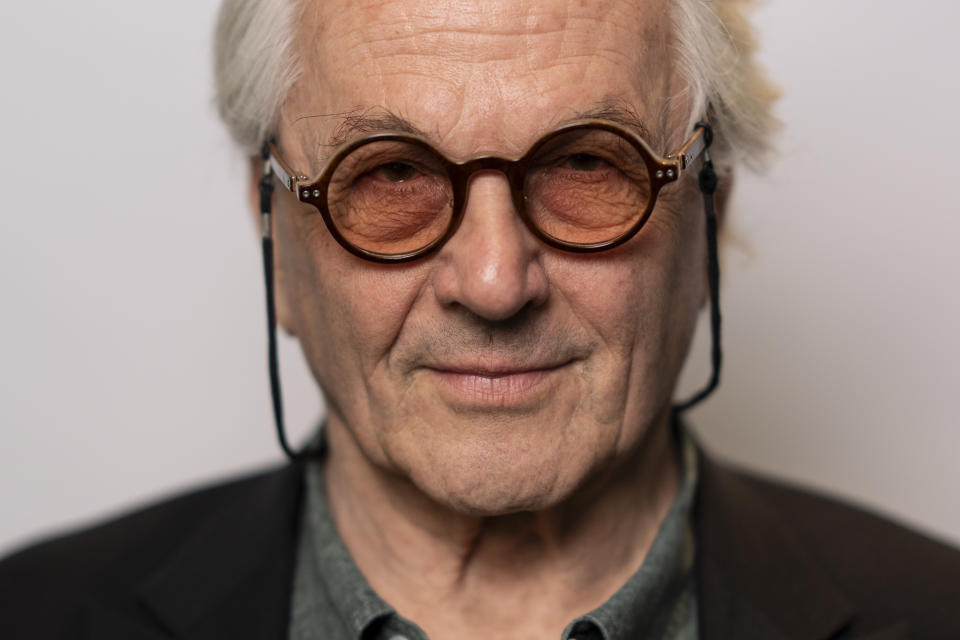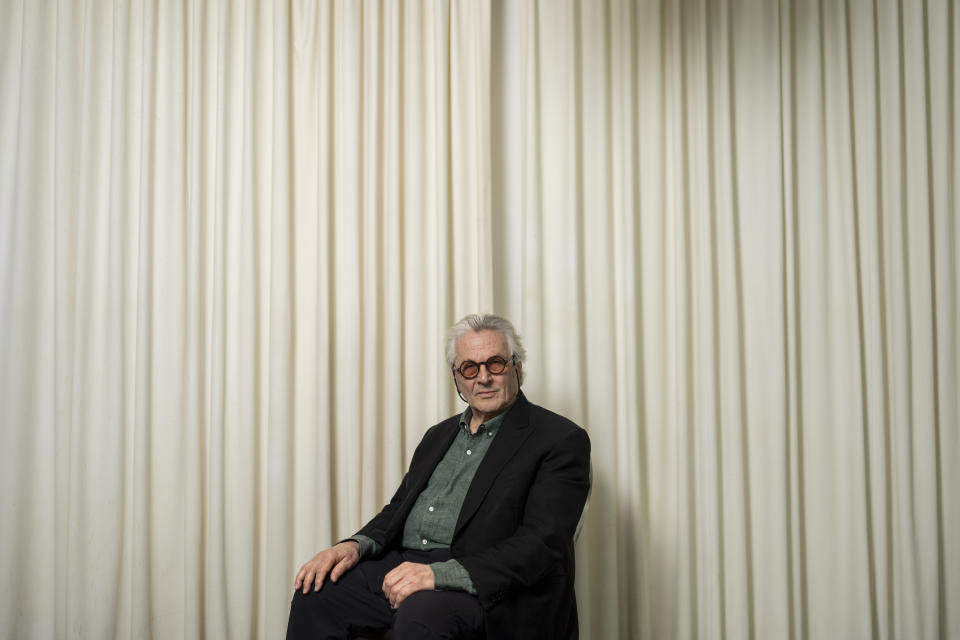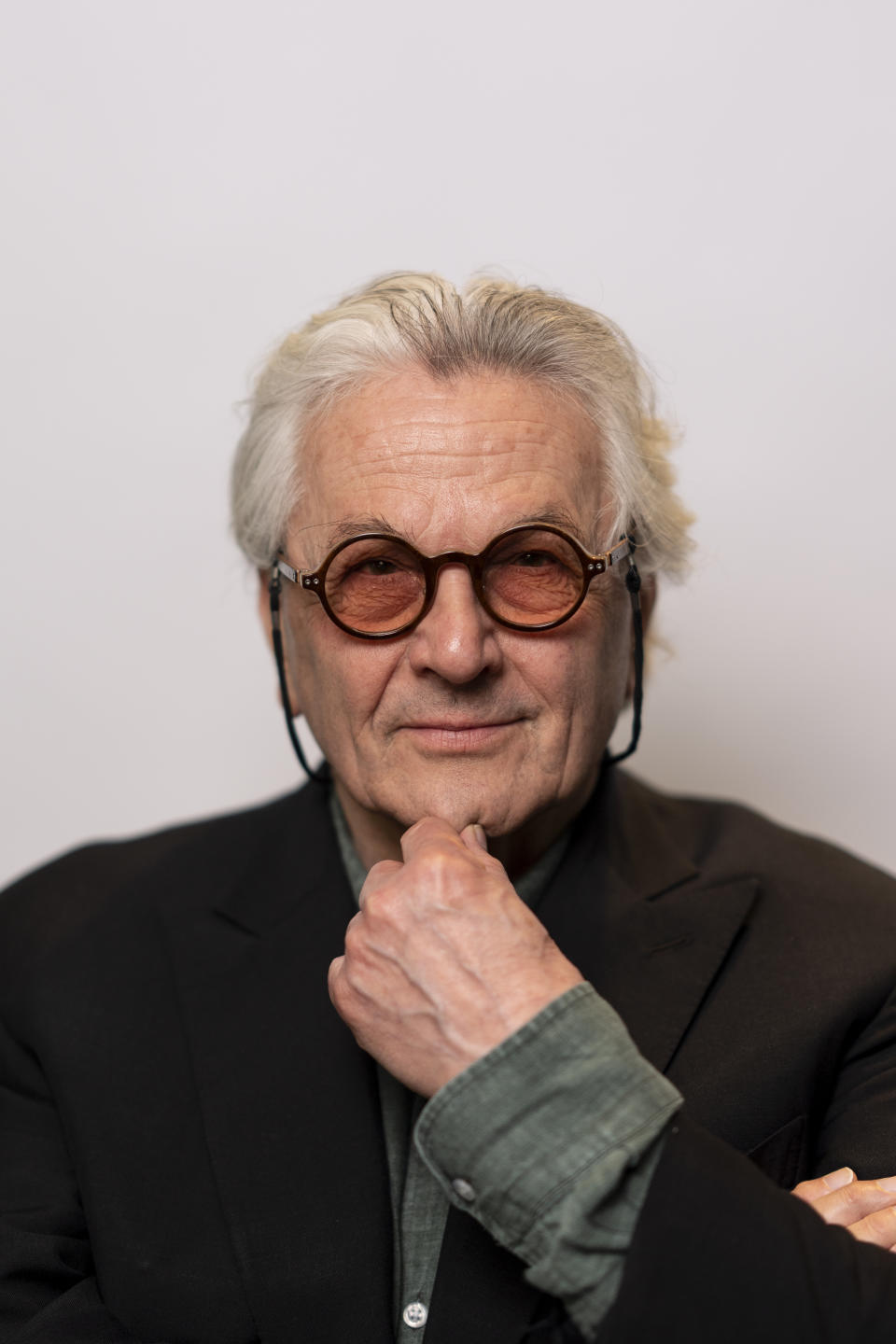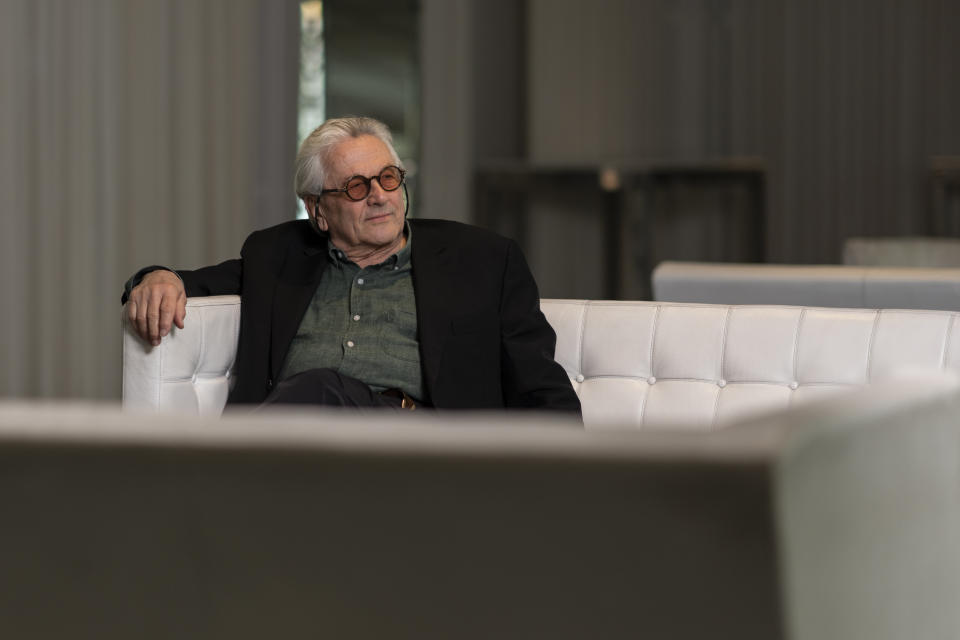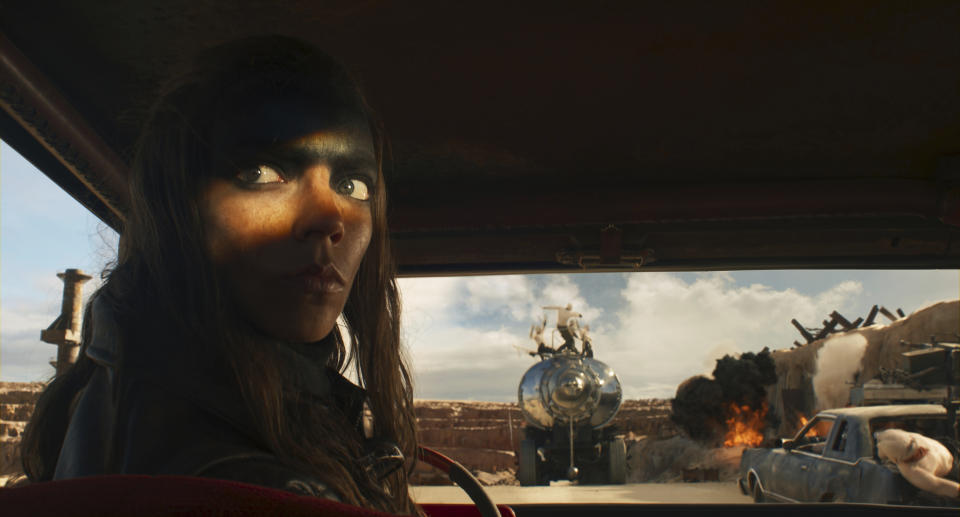'Mad Max' has lived in George Miller's head for 45 years. He's not done dreaming yet
- Oops!Something went wrong.Please try again later.
- Oops!Something went wrong.Please try again later.
- Oops!Something went wrong.Please try again later.
CANNES, France (AP) — Only recently has George Miller realized just how influential his medical education was to the world of “Mad Max.”
Miller was briefly a doctor before finding filmmaking and his twin brother, whom he attended university with, remained one. As a resident at St. Vincent’s Hospital in Sydney, Miller saw people in birth and in death, in moments of, he says, “extremis.”
Extremis — a Latin word that literally translates as “at the point of death” — would be a fairly apt way to describe the post-apocalypse wasteland of “Mad Max.” It could apply to, well, all of the characters, or to the Earth, itself. The more you think about it, the more Miller’s desert dystopia begins looking like a fantastical ER. The human blood bags of “Mad Max: Fury Road.” Furiosa’s prosthetic arm. Immortan Joe’s respirator mask.
“I don’t think I’d still be making films if I didn’t have that part of myself,” Miller said of his medical background in a recent interview.
“You’re looking at a human being from every point of view. As organs. As individuals,” Miller says. “Sometimes looking through a microscope and seeing their cells. Or an autopsy. Psychologically. In every way, you’re looking at the human being. That’s what you do as a storyteller.”
Miller’s holistic eye could apply to the sprawling saga of “Mad Max,” too. It’s a world that has lived in his head for nearly half a century. Unlike most other long-running film franchises, it’s exclusively Miller’s. The 79-year-old filmmaker has written and directed every film, from 1979’s “Mad Max” to the new “Furiosa: A Mad Max Saga,” which opens in theaters May 24.
Also unlike most franchises, Miller’s vision has grown only more kinetic with time. “Fury Road,” considered among the greatest action films ever made, moved like Buster Keaton on steroids, with madcap stunts and continual forward movement, all agonizingly spliced together from the briefest of shots amid an infamously troubled production. “Furiosa,” a prequel to the events of that film starring Anya Taylor-Joy as a young Furiosa, enlarges the saga, and, particularly in a few breathless sequences, maintains the same headlong momentum.
“I don’t do anything with my hands anymore,” Miller says. “There’s always someone who can type faster than me. There’s always someone who can cut faster than me. There’s always someone who can operate a camera much better than me. So it’s all in the head.”
“I can quote some of the lines from the movie but I know virtually every cut of virtually every movie I’ve made — and in many cases, the cuts of some of my favorite movies,” adds Miller. “That’s my neurology.”
But it took time to restart “Mad Max.” As sensational as the response was to “Fury Road,” which won six Oscars, its making was marred by production troubles and discord among its cast. Friction continued in the years after, too, as Miller and Warner Bros. sued each other in a pay dispute.
Those issues eventually got ironed out and attention turned to a pair of scripts Miller had ready. While “Fury Road” was stuck in delay, Miller had written treatments for both “Furiosa” and “The Wasteland,” a “Mad Max” film taking place a year before “Fury Road.” He hopes to make that soon. First came “Furiosa,” which Miller first intended to be an anime.
“I had no thoughts of making it into a feature film,” he says. “But when ‘Fury Road’ was delayed yet again by rains, there was no point in making an anime before we made ‘Fury Road.’ By the time we made ‘Fury Road,’ all the history of that, we decided to make it as a feature.”
Miller reassembled much of the same team from “Fury Road”: editor Margaret Sixel (Miller’s wife), co-writer Nico Lathouris, producer Doug Mitchell, production designer Colin Gibson, stunt coordinator Guy Norris. But his cast would be largely new. For a younger Furiosa, he turned to Taylor-Joy. As they discussed her casting, Miller asked Taylor-Joy to film herself doing the “Mad as Hell” monologue from “Network.”
How was her Peter Finch? “I got the part,” Taylor-Joy says, smiling. Then came the hard part: shooting “Furiosa.”
“It’s what I wanted. I knew I wanted something that was going to test me in every way, shape and form,” says Taylor-Joy. “And I got that experience. Anybody that’s attracted to making a ‘Mad Max’ movie, if it’s not arduous in some way, I personally would feel cheated. That’s not what you go to the wasteland for.”
That included only some three dozen lines in the whole movie for Taylor-Joy. On the other hand, a staggering action sequence principally on the War Rig took 78 days to shoot. Taylor-Joy says it was an exercise of piece-by-piece filmmaking.
“I could kind of count myself down,” says Taylor-Joy. “I was like, ‘OK, I’m below the vehicle. And now I’m on the side of the vehicle. And I’ve finally made it into the cow catcher. And, oh my God, I’m standing. This is better.’"
Chris Hemsworth, in one of the most colorful and transformative performances of his career, plays the villain Dementus with the flair of a deranged Roman conqueror. A key to unlocking the character, Hemsworth says, was a tip from Miller to try journaling in the voice of Dementus, a maniac with his own painful history who wears his Rosebud — a teddy bear — strapped to his back.
“It was the most satisfying experience that I’ve had," Hemsworth says of the role. “The script gave me so many more options and directions that I could take a character than I had previously been given. It was a big departure from everything else I’d done."
Lengthy as the making of “Furiosa” was, both stars went into the process determined to have a more positive environment than on “Fury Road.”
“We all went in to make this — not excusing any kind of behavior — wanting to be extra kind to each other,” says Taylor-Joy. “Especially for me, I’m a big George Miller fan. I wanted to make sure he felt respected and heard and cared on set.”
“Mad Max” has by now morphed into a kind of archetype — a near-future Western with amped-up modern anxieties. As before in “Mad Max,” water is short and natural resources are brutally battled over in “Furiosa.”
“You could argue that depending on where you are in history, where you are in time and space, there is always a sense of potential chaos and a fallen world,” Miller says. “It’s always there in the zeitgeist.”
But, Miller points out, these movies are largely shot outdoors, and the conditions he’s made them in has markedly changed with time. Miller remembers visiting an area of the Great Barrier Reef in the early ’70s. When he returned decades later to the same beach, “the difference was shocking to me.”
“All of that stuff is there," Millers says. “And it has to be expressed in any story you tell about the world.”
Miller’s brother recently retired as a doctor. But for years, they’d speak on the phone about his patients, discussing observations and diagnoses.
“That was a way, I realize, of us both processing the chaos of the world,” says Miller. “I like to think that that’s what I’m still doing.”
___
Follow AP Film Writer Jake Coyle at: http://twitter.com/jakecoyleAP
